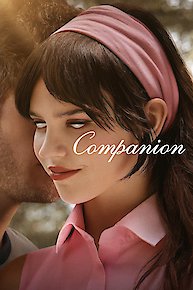
Fright
Where to Watch Fright

Fright is a British psychological horror film that was launched in 1971. It has elements of suspense, terror, and thrilling mystery wrapped in its storyline, creating a cinema-scape devoted to unnerving its audience while providing stimulating storytelling. The movie's capable director is Peter Collinson, who is known for his distinctive style and pacifying storytelling. The screenplay is masterfully written by Tudor Gates, delivering a horror tale that enwraps viewers with ongoing suspense and escalating fear.
The film features the talented ensemble of Honor Blackman, Susan George, and George Cole, each playing integral roles that imbue the plot with depth and dimension. Blackman, a prominent name in the British film industry and globally recognized for her roles in "Goldfinger" and "The Avengers," exhibits her acting prowess within a darker, more chilling genre quite flawlessly. Young Susan George offers her youthful charm in a role that requires innocence juxtaposed with terror, showcasing her vast acting range. George Cole is equally pivotal to the film's success as he brings his unique artistry and charisma to this sinister storyline.
The plot revolves around a successful writer's young wife named Amanda, portrayed by the gifted Susan George, who is tasked to babysit a child for the evening in a secluded country estate while the child's parents are out. Although initially it feels like a routine babysitting job, things soon take a turn for the bizarre and the gruesome. Amanda's evening takes a horrifying turn as she becomes privy to incidents that place her in a cycle of escalating terror.
Fright skilfully plays upon themes of isolation, vulnerability, and the human mind's fragility when exposed to inexplicable events. The movie is successful in cultivating an unnerving atmosphere right from the outset with the vast, darkened country estate serving as the perfect eerie backdrop. This setting effectively uses the silence and stillness of isolation, amplifying the suspense and the isolation that the protagonist, Amanda, endures.
Meanwhile, characters like Helen, played by Honor Blackman, offer a different perspective, contributing complexity to the plot with their personal secrets and undisclosed information. Blackman's character is enigmatic, and her role is pivotally placed within the dynamics of the film, adding unexpected twists to the narrative. The role of George Cole as the concerned character of Jim, who's clueless about the impending doom, offers a counterpoint to the terror unfolding within the film's narrative.
With key aspects of physiological terror placed intricately within the plot, Fright employs an intense cat-and-mouse dynamic. It uses its narrative space to delve into aspects of paranoia. Fear, anxiety, and the unpredictability of human emotions in terrifying conditions are communicated through fantastic screenplay and acting. Fright is also distinguished by its elements of surprise buried in its plot, making for a riveting viewing that keeps audiences on the edge of their seats.
The cinematography reinforces the movie's suspenseful atmosphere. The limited lighting in the house shadows the characters, creating an ambiance of imminent danger and vulnerability. The use of sound and music is equally well-crafted, tailored to heighten suspense, foreboding, and horror. Sharp sounds cut through the otherwise silent scenes, amplifying fear with eerie echoes around the house, reminding viewers of the increasing danger that lurks every corner for Amanda.
Throughout its duration, Fright works diligently at building anticipation using visual cues, psychological play, and audio manifestations of terror. It manages to maintain this unnerving ambiance without an over-reliance on graphic visuals or gore, focusing instead on the fear of the unseen or the partially seen, which is arguably more powerful.
In a nutshell, Fright is a successful exploration of horror by incorporating psychological elements, backed up by commendable performances from the cast and impressive directorial skills. This 1971 film is a testament to the power and appeal of the horror genre in cinema. The movie's ability to deliver high-tension, suspense, and gripping storylines makes it an unforgettable classic that continues to resonate with audiences today. For lovers of suspense and psychological horror, Fright is a choice pick that promises a cinematic experience filled with edge-of-your-seat moments, amplified by the bravura performances of its exceptional cast.
Fright is a Horror, Thriller movie released in 1971. It has a runtime of 87 min. Critics and viewers have rated it moderate reviews, with an IMDb score of 5.8..
How to Watch Fright
Where can I stream Fright movie online? Fright is available to watch and stream, buy on demand, download at Amazon Prime, Amazon Prime, Tubi TV, Apple TV, Amazon, Vudu. Some platforms allow you to rent Fright for a limited time or purchase the movie for downloading.

































